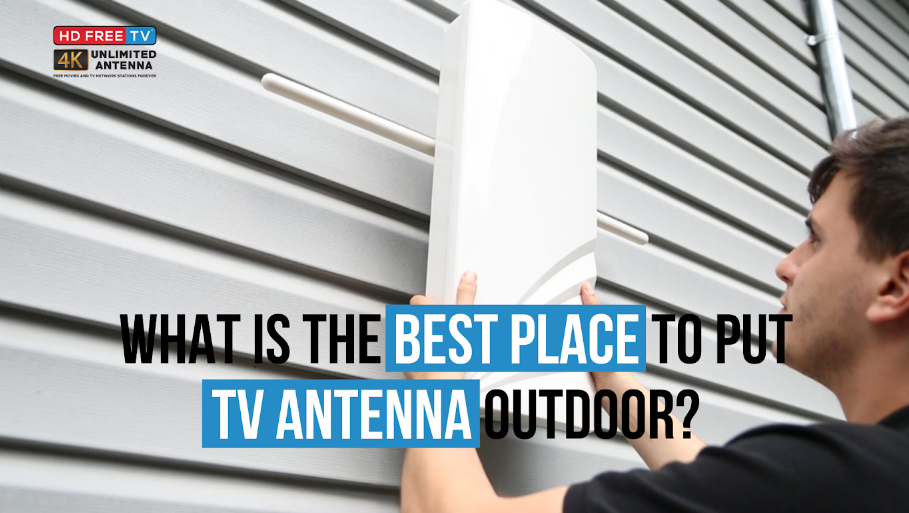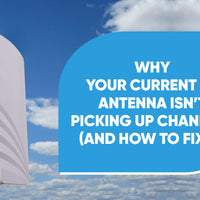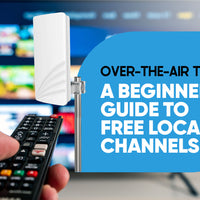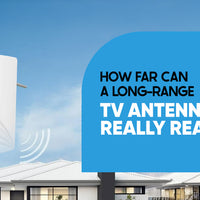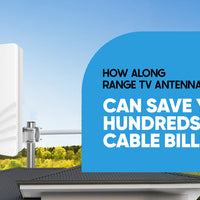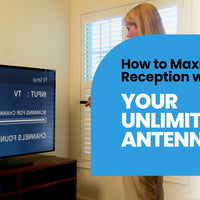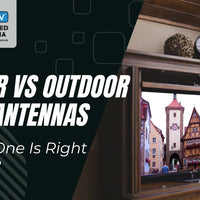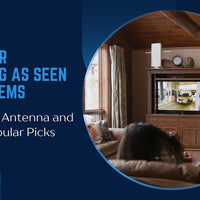Summary
- Proper placement near windows or elevated spots improves reception.
- Electronic interference and obstructions should be minimized.
- The right antenna type depends on tower direction and signal strength.
- Periodic channel rescans help detect new stations.
- Unlimited Antenna supports 4K resolution, DVR, and broad signal range.
Indoor digital TV antennas have become a preferred option for viewers who want to access free over-the-air broadcasts without the burden of cable bills or streaming subscriptions. With the right equipment and setup, users can receive high-definition local and national channels without paying a monthly fee.
However, simply plugging in an antenna is rarely enough to unlock its full potential. From placement and signal amplification to choosing the right antenna type, there are several ways to optimize reception and increase the number of available channels. This guide outlines effective strategies and highlights how advanced solutions like Unlimited Antenna can enhance overall performance.
Key Strategies to Get More Channels
Improving your channel lineup starts with a thoughtful setup. The placement of your antenna, the environment around it, and even the type of antenna you choose all contribute to reception quality.
Placement is Crucial
Antenna placement is one of the most important factors for receiving more channels. Ideally, an indoor antenna should have a clear line of sight to the broadcast towers.
Try the following:
- Place the antenna near a window, preferably one that faces the direction of nearby towers.
- Mount it high on a wall or shelf to reduce obstructions and improve signal access.
- Avoid basements or rooms surrounded by concrete, which tend to block signals.
Online tools like AntennaWeb and TV Fool help users identify the direction and distance of their local towers.
Check for Obstructions
Even a well-positioned antenna can underperform if surrounded by interference. Physical and electronic obstructions are common culprits.
Avoid placing your antenna:
- Behind TVs, furniture, or metallic shelving.
- Near devices that emit signals, such as routers, cordless phones, or microwaves.
Clearing the area immediately around the antenna often results in improved signal clarity and more available channels.
Antenna Type Matters
The type of antenna you use plays a major role in how many stations you can receive. Not all antennas work the same way, and their strengths depend on your location and environment.
- Directional antennas are best when broadcast towers are concentrated in one direction.
- Omnidirectional antennas like Unlimited Antenna receive signals from multiple directions, making them ideal for suburban and urban setups.
- Look for antennas that support both VHF and UHF frequencies to ensure compatibility with a wide range of stations.
Signal Amplification
For homes located far from transmission towers or surrounded by thick walls, signal amplification can help.
Amplified antennas or external signal boosters:
- Strengthen weak signals to make distant stations viewable.
- Should be used cautiously in strong signal areas to avoid distortion.
The Unlimited Antenna Deluxe includes balanced amplification, offering extended coverage without the risk of over-amplification.
Rescan for Channels
After every adjustment or relocation, it's important to rescan for channels. Over-the-air frequencies change from time to time, and rescanning ensures you're picking up the latest broadcasts. Use your TV’s channel scan feature regularly to stay updated on newly available content.
Understanding How Indoor Digital TV Antennas Work

To get the most from your indoor antenna, it helps to understand how TV signals operate.
There are two main types of signals:
-
VHF (Very High Frequency): Channels 2–13, capable of long-distance travel, but less frequently used in HD broadcasts today.
-
UHF (Ultra High Frequency): Channels 14–51, commonly used for high-definition digital content but more susceptible to interference.
Digital antennas are also subject to the “cliff effect.” Unlike analog signals that degrade gradually, digital signals either deliver perfect reception or none at all. Small adjustments in position can have a big impact.
Troubleshooting Common Issues
Even with a good antenna, reception issues can arise. Understanding the cause helps resolve the problem efficiently.
Weak Signals
If you're experiencing weak signals, try relocating the antenna to a higher or more open space where it can receive a clearer line of sight to broadcast towers. In some cases, using a signal amplifier or switching to an amplified antenna model can help improve reception quality.
No Channels Found
When no channels are found during a scan, start by checking all cable connections to ensure they’re secure and properly attached. After making adjustments to the antenna’s placement or orientation, perform another channel scan to see if reception improves.
Weather Impact
Heavy rain, snow, or wind can temporarily reduce signal strength. Antennas with a weather-resistant finish, such as Unlimited Antenna, are better equipped to handle adverse conditions.
Conclusion
Maximizing the number of channels from an indoor digital TV antenna is possible with the right combination of equipment, placement, and configuration. Whether it's choosing an omnidirectional model for urban coverage or adding signal boosters in rural settings, each step contributes to a better viewing experience.
High-performance solutions like Unlimited Antenna take much of the guesswork out of the process. With features such as multi-directional reception, 4K support, built-in DVR, and compatibility with all TVs, they provide a seamless and cost-effective way to access more content, more often.
Related Articles:

